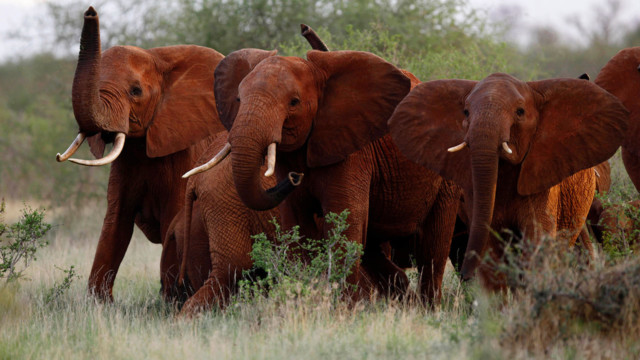U.S. President Donald Trump has reversed a decision by his own administration to allow trophy hunters who kill elephants in two African nations to bring home the endangered animals’ tusks or other body parts as souvenirs. Trump’s announcement followed an outcry from conservation groups over White House plans to lift a ban imposed by the Obama administration in 2014.
The original notice that it planned to change the Obama-era policy came from the U.S. Fish and Wildlife Service at a meeting in Africa organized by a pro-trophy hunting lobbying group. The agency said it had determined that Zimbabwe and Zambia had developed robust conservation programs that would enhance the survival of African elephants, the world’s largest land animals.
It would have been the latest in a series of actions by the Trump administration to reverse policies implemented by his Democratic predecessor, Barack Obama. Trump’s sons are avid hunters, and opponents of the move posted photos on Twitter of Donald Trump Jr. posing with the cut-off tail of a slain elephant.
The news came the week Zimbabwe was rocked by a coup d’etat that left the country’s president, Robert Mugabe, living under house arrest, and the agency’s decision drew sharp criticism from conservation groups.
“The original ban was enacted based on detailed findings on the condition of elephant populations on the ground, and it strains credulity to suggest that local science-based factors have been met to justify this change,” M. Sanjayan, chief executive of Conservation International, said in a statement.
A report released last year found that the population of African elephants had fallen by some 30 percent between 2007 and 2014, with poaching the primary reason for the decline.
The Great Elephant Census released in August 2016 showed a decline of 30 percent in African savanna elephant populations in 15 of the 18 countries surveyed.

Elephant population trends in GEC landscapes over the past ten years based on GEC data and comparable previous surveys (methodology in Chase et al. 2016). Red landscapes declining >5%/year, orange declining 2-5%/year, yellow declining or increasing <2%/year, pale green increasing 2-5%/year, dark green increasing >5%/year. GRAPHIC/greatelephantcensus.com
A growing number of countries, including China, Singapore and the United States have banned the trade in ivory, with the goal of cutting back poaching of the endangered African and Asian elephants.
Story compiled with information from The Associated Press and Reuters.
 CGTN America
CGTN America In this file photo taken Tuesday, March 9, 2010, elephants use their trunks to smell for possible danger in the Tsavo East national park, Kenya. The Trump administration is lifting a federal ban on the importation of body parts from African elephants shot for sport. (AP Photo/Karel Prinsloo, File)
In this file photo taken Tuesday, March 9, 2010, elephants use their trunks to smell for possible danger in the Tsavo East national park, Kenya. The Trump administration is lifting a federal ban on the importation of body parts from African elephants shot for sport. (AP Photo/Karel Prinsloo, File)
